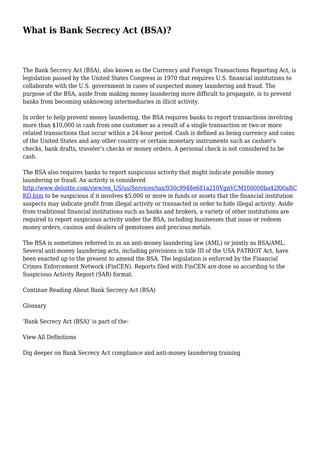Contents:


This is just a dividend payment made in shares of a company, rather than cash. Your net profit/net loss, which will probably come from the income statement for this accounting period. If you generate those monthly, for example, use this month’s net income or loss. Since retained earnings is part of shareholder’s equity which comes under balance sheet. Hence GL master of retained earnings account is created with account type ‘balance sheet’.
To learn more about the components of stockholders’ equity, visit our topic Stockholders’ Equity. Shareholders FundShareholder Fund is the fund available to stakeholders after all liabilities have been met in the event of a company’s liquidation. Have the right to receive dividends only in the years the board of directors declares dividends. Costs of production of the goods sold in a company and includes the cost of the materials used in creating the good along with direct labor and production costs.

The final liability appearing on a company’s balance sheet is commitments and contingencies along with a reference to the notes to the financial statements. No amount is shown on the balance sheet for this item. It is shown as the part of owner’s equity in the liability side of the balance sheet of the company. Firstly, it is important to understand what assets and liabilities mean in accounting terms.
Stockholders’ Equity: What It Is, How To Calculate It, Examples
Stockholders’ equity is equal to a firm’s total assets minus its total liabilities. These figures can all be found on a company’s balance sheet. Treasury shares continue to count as issued shares, but they are not considered to be outstanding and are thus not included in dividends or the calculation of earnings per share .
Acuity Brands Reports Fiscal 2023 Second-Quarter Results – Marketscreener.com
Acuity Brands Reports Fiscal 2023 Second-Quarter Results.
Posted: Tue, 04 Apr 2023 10:02:01 GMT [source]
Explore Entrepreneur’s wealth of informational articles here. The purpose of the retained earnings statement is to show how much profit the company has earned and reinvested. If you use retained earnings for expansion, you’ll need to determine a budget and stick to it. Doing so will ensure that your company uses its earnings efficiently and maintains the right balance between growth and profitability. That’s why you must carefully consider how best to use your company’s retained earnings. The following are four common examples of how businesses might use their retained earnings.
Are retained earnings an asset?
It belongs to owners of partnerships and LLCs as agreed to by the owners. Retained earnings can be used for a variety of purposes and are derived from a company’s net income. Any time a company has net income, the retained earnings account will increase, while a net loss will decrease the amount of retained earnings. As stated earlier, companies may pay out either cash or stock dividends.
It’s safe to say that understanding retained earnings and how to calculate it is essential for any business. This article outlines everything you need to know, but feel free to jump straight to your topic of focus below. Accounts Payables, or AP, is the amount a company owes suppliers for items or services purchased on credit. As the company pays off its AP, it decreases along with an equal amount decrease to the cash account.
Cash dividends result in an outflow of cash and are paid on a per-share basis. Likewise, the traders also are keen on receiving dividend payments as they look for short-term gains. In addition to this, many administering authorities treat dividend income as tax-free, hence many investors prefer dividends over capital/stock gains as such gains are taxable. Retained earnings refer to the residual net income or profit after tax which is not distributed as dividends to the shareholders but is reinvested in the business. Typically, the net profit earned by your business entity is either distributed as dividends to shareholders or is retained in the business for its growth and expansion.
How Do You Calculate Retained Earnings on the Balance Sheet?
Your https://1investing.in/ can be useful in a variety of ways such as when estimating financial projections or creating a yearly budget for your business. However, the easiest way to create an accurate retained earnings statement is to use accounting software. You’ll need to access the beginning balance of retained earnings.
- In between the opening and closing balances, the current period net income/loss is added and any dividends are deducted.
- Companies can further expand these formulas by separating cash and stock dividends.
- An increase or decrease in revenue affects retained earnings because it impacts profits or net income.
- If you use it correctly, an income statement will reveal the total net income of your business by calculating the difference between your assets and liabilities.
- Treasury shares can always be reissued back to stockholders for purchase when companies need to raise more capital.
It can present value formula if the owner takes money out of the business, by taking a draw, for example. If you’re using the wrong credit or debit card, it could be costing you serious money. Our experts love this top pick, which features a 0% intro APR until 2024, an insane cash back rate of up to 5%, and all somehow for no annual fee. This is the final step, which will also be used as your beginning balance when calculating next year’s retained earnings. A negative stockholders’ equity may indicate an impending bankruptcy.
Outstanding Shares=Number of issued shares-Treasury stocks
Retained earnings are a type of equity and are therefore reported in the shareholders’ equity section of the balance sheet. Although retained earnings are not themselves an asset, they can be used to purchase assets such as inventory, equipment, or other investments. Therefore, a company with a large retained earnings balance may be well-positioned to purchase new assets in the future or offer increased dividend payments to its shareholders. Remember that your company’s retained earnings account will decrease by the amount of dividends paid out for the given accounting period. When calculating retained earnings, you’ll need to incorporate all forms of dividends; you’ll see that stock and cash dividends can impact the final number significantly. The purpose of the statement of shareholders’ equity is to a.

The stockholders’ equity section may include an amount described as accumulated other comprehensive income. This amount is the cumulative total of the amounts that had been reported over the years as other comprehensive income . Select all that apply The advantages to the corporate form of business include a. All business types use owner’s equity, but only sole proprietorships name the balance sheet account “owner’s equity.” Retained earnings are corporate income or profit that is not paid out as dividends. That is, it’s money that’s retained or kept in the company’s accounts.
This protects creditors from a company being liquidated through dividends. A few states, however, allow payment of dividends to continue to increase a corporation’s accumulated deficit. This is known as a liquidating dividend or liquidating cash dividend. Dividends paid are the cash and stock dividends paid to the stockholders of your company during an accounting period. Where cash dividends are paid out in cash on a per-share basis, stock dividends are dividends given in the form of additional shares as fractions per existing shares.
Usually, retained earnings consists of a corporation’s earnings since the corporation was formed minus the amount that was distributed to the stockholders as dividends. In other words, retained earnings is the amount of earnings that the stockholders are leaving in the corporation to be reinvested. On the balance sheet, retained earnings appear under the “Equity” section. “Retained Earnings” appears as a line item to help you determine your total business equity. Retained earnings are actually reported in the equity section of the balance sheet. Although you can invest retained earnings into assets, they themselves are not assets.
This bookkeeping concept helps accountants post accurate journal entries, so keep it in mind as you learn how to calculate retained earnings. Dividends are cash or stock payments that a company makes to its shareholders out of profits or reserves, typically on a quarterly or annual basis. That said, retained earnings can be used to purchase assets such as equipment and inventory.
- In this case, Company A paid out dividends worth $10,000, so we’ll subtract this amount from the total of Beginning Period Retained Earnings and Net Profit.
- Essentially, retained earnings include all profits a company makes.
- Knowing financial amounts only means something when you know what they should be.
- To learn more about the components of stockholders’ equity, visit our topic Stockholders’ Equity.
Here we will discuss how to calculate common stocks, and preferred stocks also play a role in calculating common stocks. Are you confused on how to calculate common stocks in an effective way.Don’t worry here we will provide you easy formula steps and description to calculate common stock. Like revenue accounts, expense accounts are temporary accounts that collect data for one accounting period and are reset to zero at the beginning of the next accounting period. Most accounting programs perform this task automatically. There are times when company owners must invest their own money into the company. It may be start-up capital or a later infusion of cash.
